MIG welding, a widely used welding process known for its efficiency and versatility, has continuously evolved over the years to meet the demands of various industries.
Among its many transfer modes, globular transfer stands out as a technique that combines the best of both worlds: high deposition rates and excellent weld quality.
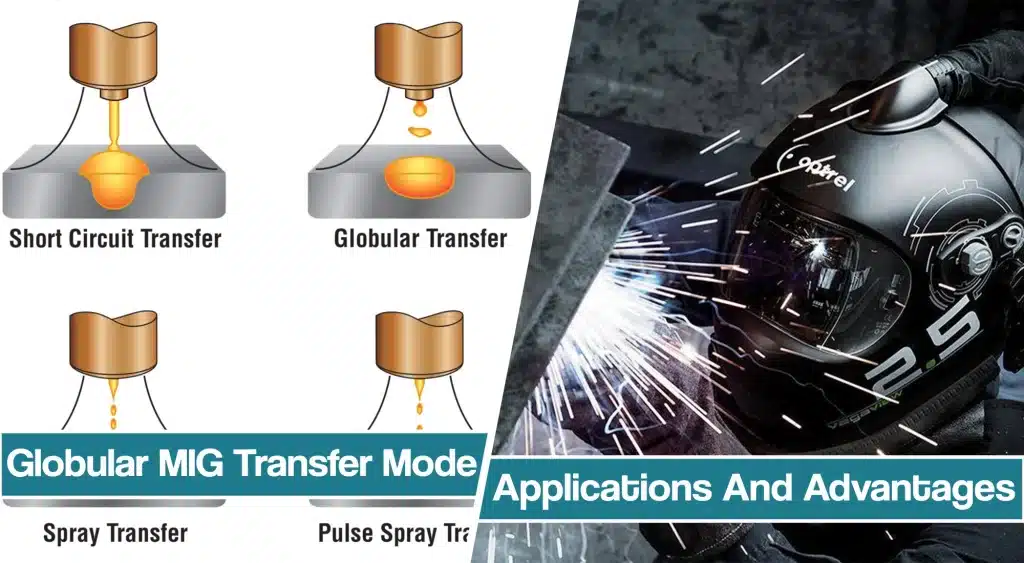
This article explores the fundamentals of globular MIG welding transfer, delving into its principles, advantages, and applications. We’ll examine the intricate interplay between voltage, current, wire diameter, and shielding gas, uncovering the secrets behind achieving optimal globular transfer and unlocking its potential for superior welds.
What Is Globular MIG Welding Transfer?
The globular transfer is one of the transfer modes in the process of MIG (Metal Inert Gas) welding, also known as GMAW (Gas Metal Arc Welding). It occurs when molten metal droplets form at the end of the welding wire and are then transferred to the weld pool. Unlike other transfer methods, such as short-circuiting or spray transfer, the globular transfer involves larger droplets of metal that are transferred across the arc in a rhythmic manner.
The droplets are generally larger than the electrode diameter, making the process suitable for thicker materials. The transfer is accomplished by a combination of gravity and electromagnetic forces.
A globular transfer is characterized by a distinctive “popping” sound as the droplets detach from the wire and transfer to the weld pool. It provides higher deposition rates than short-circuiting transfer and can be utilized for welding thicker materials where increased penetration is desired.
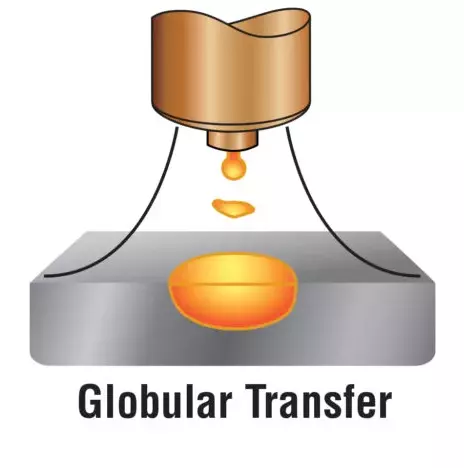
In What Application Is Globular Transfer Useful?
Globular transfer in MIG welding finds application in several scenarios where specific weld characteristics are desired. Here are some instances where a globular transfer is used and proves to be useful:
Thick materials: Globular transfer is advantageous when welding thicker materials, typically above 5 mm. The larger molten droplets generated in this mode provide increased heat input and deeper penetration, making it suitable for heavy structural welding, shipbuilding, and fabrication of thick metal components.
Flat position welding: The globular transfer mode is often employed in a flat or horizontal position, where the weld pool remains relatively stable. The slower transfer of larger droplets helps control the weld puddle and reduces the risk of excessive fusion or undercutting, resulting in better control over the weld bead shape and width.
Alloyed steels and stainless steel: Globular transfer method can be beneficial for welding alloyed steels, carbon steel, and stainless steel. The slower transfer rate allows for better control over the weld pool, minimizing the risk of excessive heat input, distortion, and the formation of brittle microstructures in the weld.
Low-cost shielding gases: Globular transfer can be paired with low-cost shielding gas, such as carbon dioxide and argon shielding gas mixture. This combination provides decent weld quality and deposition rates at a more economical cost compared to using high-purity gases required for other transfer modes.
Construction and heavy fabrication: Due to its high deposition rates, the globular transfer is suitable for applications where productivity is crucial, such as construction projects, heavy fabrication, and manufacturing of large structures. It enables faster weld completion and high wire feed speed while maintaining acceptable weld quality.
Can Globular Transfer Be Used In All Positions?
Globular transfer in MIG welding is generally limited to flat and horizontal positions due to its unique characteristics and limitations. While it can be used in various positions, its suitability and effectiveness can vary
Flat position (1G): Globular transfer is most commonly used in flat position welding (1G). The stable weld pool and controlled transfer of molten droplets make it easier to achieve good bead control and penetration.
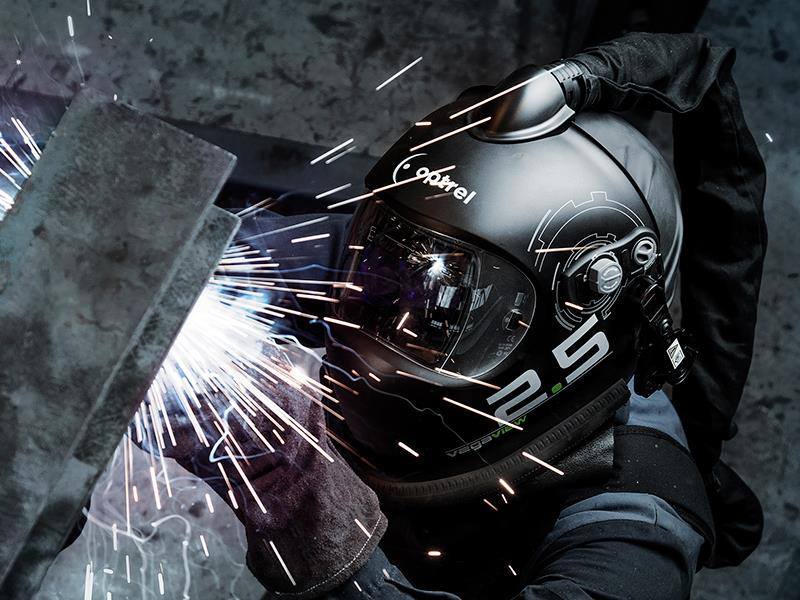
Horizontal position (2G): In horizontal position welding (2G), a globular transfer can still be used, but it may require careful adjustment of welding parameters to maintain proper control over the weld pool. The slower transfer rate and potential for droplet sagging due to gravity may pose challenges in achieving consistent and quality welds.
Vertical position (3G and 4G): Using globular transfer in the vertical position (3G and 4G) is more challenging. The larger droplets tend to sag and may lead to insufficient penetration or inconsistent bead shape. Vertical-up welding with globular transfer is less common due to the difficulty in controlling the weld pool.
Overhead position (4F): Globular transfer is generally not recommended for overhead welding (4F) due to the risk of excessive spatter and lack of control over the molten droplets. The potential for droplet detachment and weld pool instability can result in poor weld quality and increased rework.
Globular Vs Spray Transfer Mode
Globular transfer and spray-type transfer are two distinct modes of metal transfer in MIG welding, each with its own characteristics and applications. The key differences between globular and spray transfer lie in the droplet size, transfer rate, heat input, and applications.
The globular transfer involves larger molten metal droplets that detach from the filler metal and transfer across the arc in a slower, rhythmic manner.
In contrast, spray transfer consists of smaller droplets that are finely atomized and transferred at a higher rate. This transfer generates more heat input, resulting in deeper penetration, while spray transfer produces lower heat input and narrower weld beads.
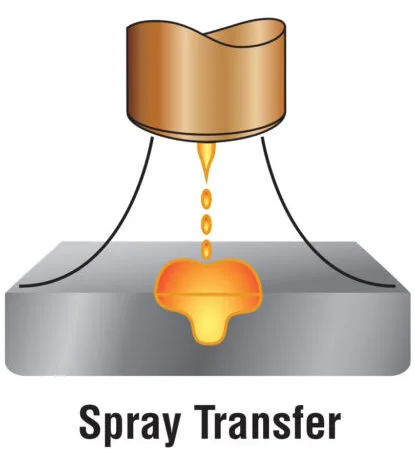
Globular transfer is often used for welding thicker materials, where increased penetration and deposition rates are desired. Spray transfer, on the other hand, is commonly employed for thinner materials, reducing heat input and minimizing distortion.
Globular VS Short Circuit Welding Transfer modes
When comparing globular transfer and short circuit transfer mode in MIG welding, each mode has its strengths and limitations.
Understanding these characteristics helps welders select the appropriate transfer mode based on the specific requirements of the welding project.
Globular transfer offers advantages in terms of higher deposition rates and increased penetration.
However, it can be challenging to achieve stable and controlled globular transfer, particularly in positions other than flat welding. The larger droplets can lead to spatter, inconsistent bead shape, and potential weld defects.
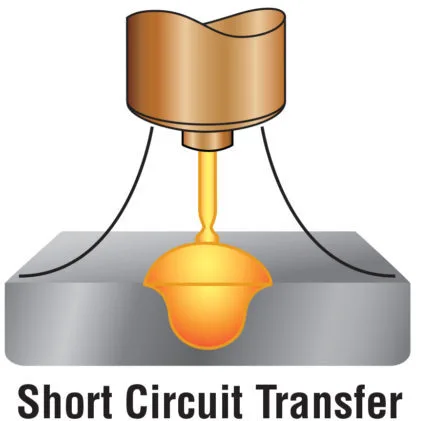
On the other hand, short circuit transfer excels in providing finer control and lower heat input. The smaller droplets transferred through rapid short circuits allow for precise weld pool manipulation, making it suitable for welding thinner materials and various positions, including overhead welding. Short circuit transfer tends to produce less spatter and allows for better control over the weld bead.
Globular VS Pulsed MIG Transfer
A globular transfer is advantageous for thicker materials, offering higher deposition rates and deeper penetration, but can be more challenging to control. Pulsed MIG transfer provides precise control, reduced heat input, and improved bead appearance, making it suitable for thinner materials and critical welds, but it may have limitations in terms of high deposition rates and deep penetration.
Pulsed MIG transfer utilizes a pulsing current to control to prevent high heat input. It allows for precise control over the droplet size, transfer rate, and weld puddle. Pulsed spray mode is beneficial in various applications, particularly for thinner materials and critical welds. Spray arc offers advantages such as reduced heat input, lower distortion, improved bead appearance, and increased control over the weld pool.
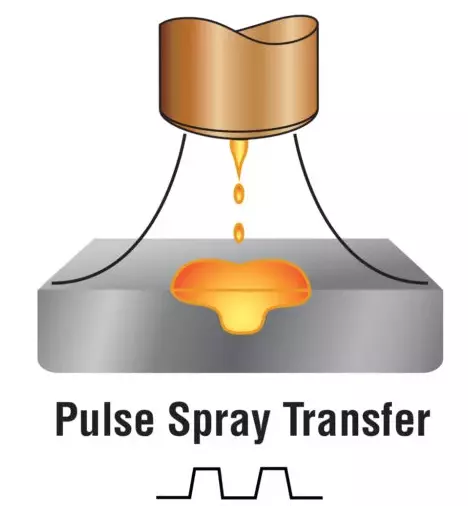
Advantages And Drawbacks Of Globular MIG Transfer
Advantages of Globular Transfer in MIG Welding:
- Higher deposition rates: Globular transfer enables faster welding progress as it allows for higher metal deposition rates. This can be beneficial in applications where productivity and efficiency are important factors.
- Deeper penetration: The larger droplets and slower transfer rate in globular transfer result in deeper penetration into the base metal. This makes it suitable for welding thicker materials, where increased joint strength and weld integrity are desired.
- Simpler equipment requirements: Globular transfer can be achieved with relatively simpler equipment compared to other transfer modes. This can be advantageous in terms of initial setup costs and ease of operation.
- Cost-effective: Globular transfer often utilizes low-cost shielding gases, such as a mixture of carbon dioxide and argon. This makes it a cost-effective option, especially in high-volume production environments or when budget constraints are a concern.
- Acceptable weld quality: While not as refined as other transfer modes, the globular transfer can provide acceptable weld quality in certain applications. With proper control of welding parameters and techniques, it is possible to achieve satisfactory fusion and minimize defects.
Drawbacks of Globular Transfer in MIG Welding:
- Limited suitability in out-of-position welding: Globular transfer is primarily suitable for flat welding positions, while it can be challenging to achieve consistent control and stability in vertical and overhead positions.
- Control and stability issues: Achieving consistent control and stability in the globular transfer can be difficult. The larger droplets and slower transfer rate increase the risk of spatter, inconsistent bead shape, and potential weld defects if not properly managed.
- Limited control over heat input: Compared to other transfer modes like pulsed MIG or spray transfer, globular transfer offers limited control over heat input. This may be a disadvantage when precise control and lower heat input are required for certain applications or materials.
- Spatter and post-weld clean-up: Globular transfer tends to produce more spatter compared to other transfer modes. This can increase the need for post-weld clean-up and potentially result in a higher level of rework or additional finishing processes.
- Limited application versatility: While the globular transfer is suitable for thicker weld metal, it may not be the optimal choice for thinner materials or critical welds that require finer control and lower heat input. Other transfer modes offer better suitability in these situations.
Conclusion
Globular transfer in MIG welding offers certain advantages and drawbacks that must be carefully considered. It provides higher deposition rates and deeper penetration, making it suitable for welding thicker materials and increasing productivity.
The simpler equipment requirements and cost-effectiveness of globular transfer can be advantageous in certain welding scenarios. However, its limitations include limited suitability in positions other than flat welding, challenges in achieving consistent control and stability, and a higher risk of spatter and weld defects. For thinner materials or applications requiring finer control and lower heat input, alternative transfer modes may be more suitable. Ultimately, understanding the characteristics and trade-offs of globular transfer allows welders to make informed decisions and select the appropriate transfer mode for their specific welding needs.
Resources
- https://www.jasic.co.uk/post/mig-welding-modes-of-transfer
- https://weldingtech.net/globular-transfer/
- https://www.hobartbrothers.com/resources/technical-articles/welding-transfer-modes-tips-for-achieving-the-best-results/
- https://www.sciencedirect.com/topics/engineering/globular-transfer
- https://www.thefabricator.com/thewelder/article/consumables/understanding-transfer-modes-for-gmaw





